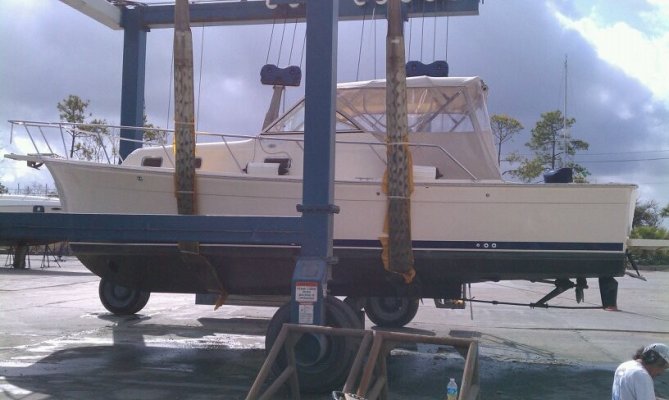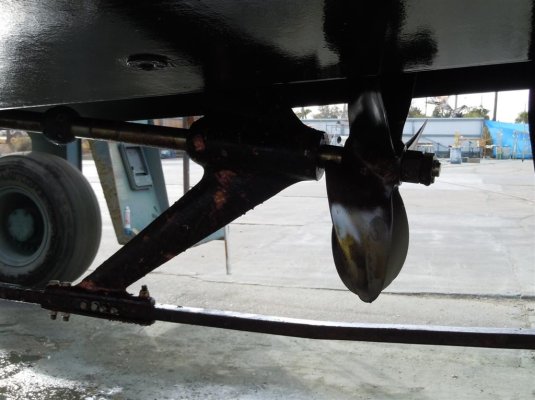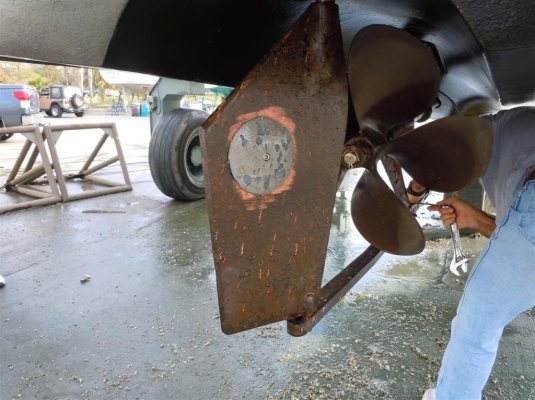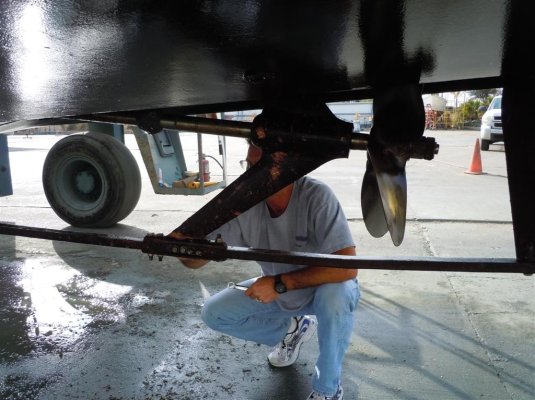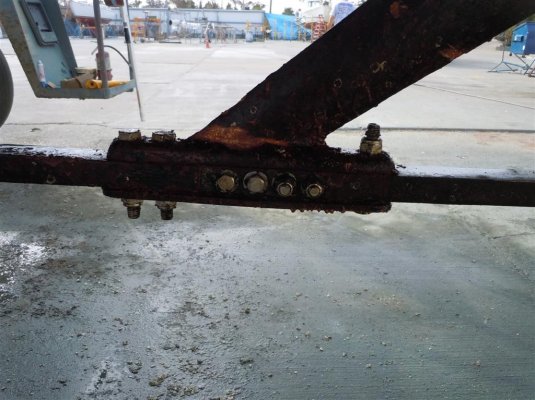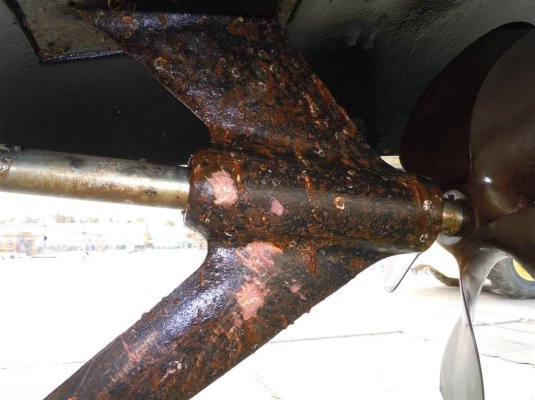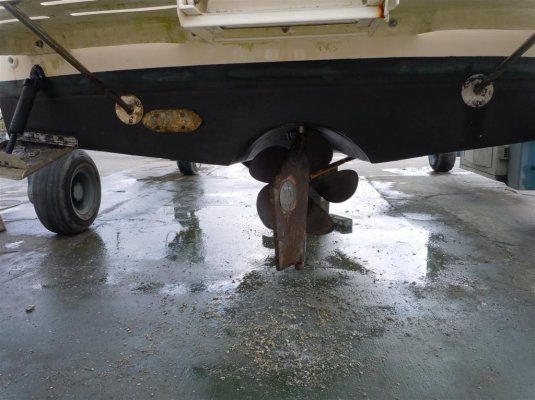- Joined
- Oct 1, 2007
- Messages
- 7,331
- Location
- Texas
- Vessel Name
- Floatsome & Jetsome
- Vessel Make
- Meridian 411
Posted below is a pic of my Mainship in the slings. *There is some electrolysis on the strut and on the "shoe" that goes forward of the strut to the hull. *The "shoe" behind the strut and back to the rudder is in perfect condition. *The two "shoe segments" are two seperate pieces of metal as is the strut(obviously). *You can see the bolts that bolt each shoe segment to the strut...that is metal to metal contact as is the contact with the rudder.
My question is, how in the heck can the strut and one side of the shoe suffer from electrolysis while the other segment(and the rudder for that matter) are in perfect shape???? *Especially since they are all connected.
The rudder has a bonding wire to it. *The strut has a bonding wire to it. *The whole bonding system is connected via a galvanic isolator by ProMariner. *The continuity of the bonding circuit has not been checked but that will be completed by the end of the week if not already.
And my ignorance is vast!!!...but my ignorance of electricity is unsurpassed!!! *What am I missing here????
BTW, we hauled to check the structural integrity of the strut. *You can see we added a zinc on the shoe and also we added one to the strut just in case. *The fact that it took us about 20 minutes(with a tag team of drillers) to drill thru one inch of metal with a good cobalt drill bit put my fears to rest...there is still plenty of good metal left. *We just want to stop it. *For now, it is a "watch item". *We will haul again in the fall to take a look.
-- Edited by Baker on Wednesday 23rd of February 2011 09:48:36 AM
My question is, how in the heck can the strut and one side of the shoe suffer from electrolysis while the other segment(and the rudder for that matter) are in perfect shape???? *Especially since they are all connected.
The rudder has a bonding wire to it. *The strut has a bonding wire to it. *The whole bonding system is connected via a galvanic isolator by ProMariner. *The continuity of the bonding circuit has not been checked but that will be completed by the end of the week if not already.
And my ignorance is vast!!!...but my ignorance of electricity is unsurpassed!!! *What am I missing here????
BTW, we hauled to check the structural integrity of the strut. *You can see we added a zinc on the shoe and also we added one to the strut just in case. *The fact that it took us about 20 minutes(with a tag team of drillers) to drill thru one inch of metal with a good cobalt drill bit put my fears to rest...there is still plenty of good metal left. *We just want to stop it. *For now, it is a "watch item". *We will haul again in the fall to take a look.
-- Edited by Baker on Wednesday 23rd of February 2011 09:48:36 AM

